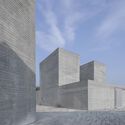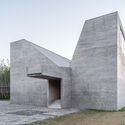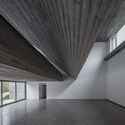
-
Architects: Atelier FCJZ
- Area: 1255 m²
- Year: 2022
-
Photographs:Keliang Li, Fangfang Tian
-
Lead Architect: Yung Ho Chang, Lijia Lu

An Education and Art Community - The Education Forum at Dongqian Lake in Ningbo is a community that includes a convention center, a hotel, an art museum, villas, and other facilities. The owner is passionate about education as well as art. A group of four studio houses is built specifically to accommodate visitors, especially scholars or artists who may come for a relatively extended period of time to conduct research and/or work on creative projects.


























































